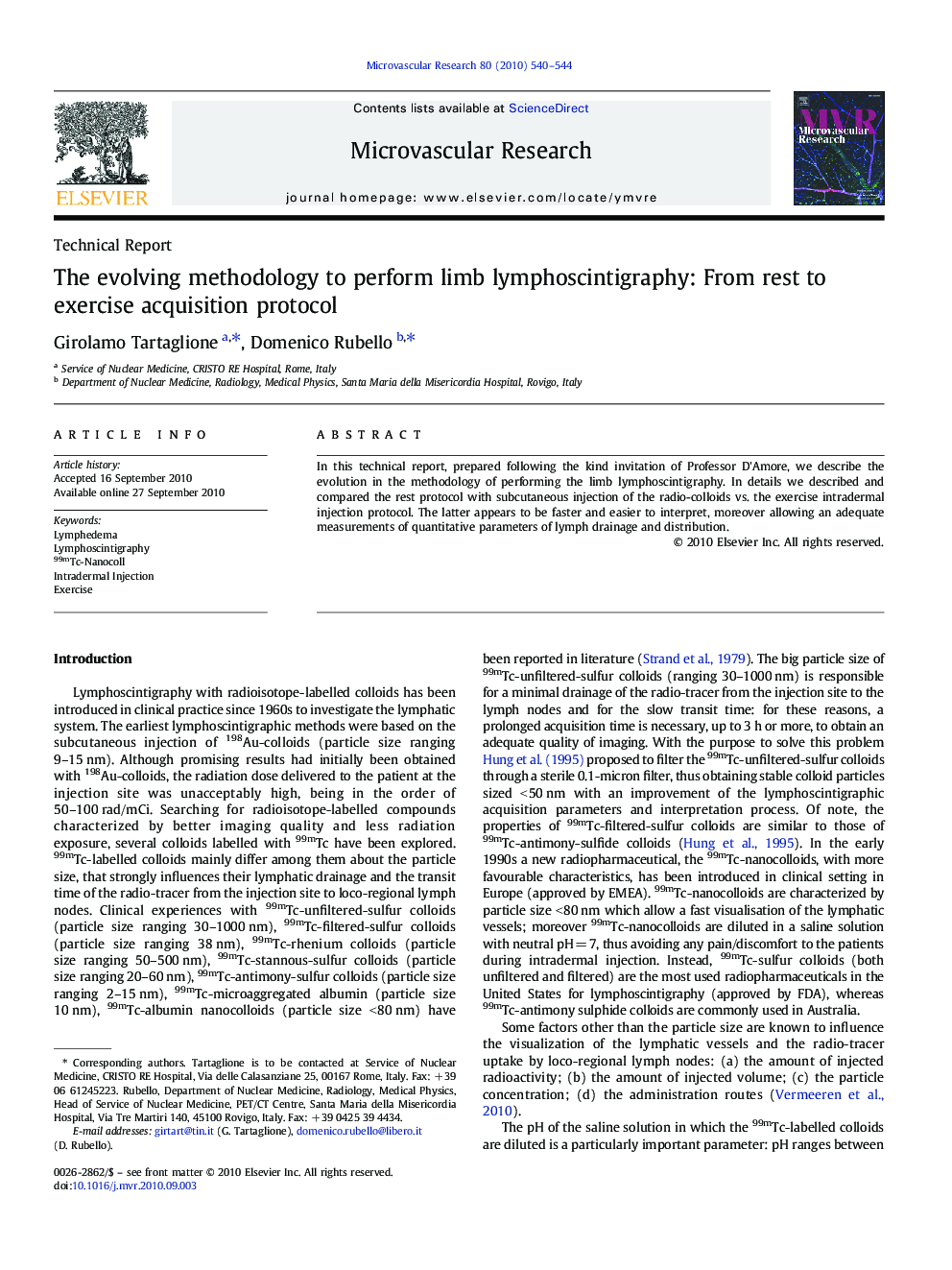| Article ID | Journal | Published Year | Pages | File Type |
|---|---|---|---|---|
| 1995143 | Microvascular Research | 2010 | 5 Pages |
In this technical report, prepared following the kind invitation of Professor D'Amore, we describe the evolution in the methodology of performing the limb lymphoscintigraphy. In details we described and compared the rest protocol with subcutaneous injection of the radio-colloids vs. the exercise intradermal injection protocol. The latter appears to be faster and easier to interpret, moreover allowing an adequate measurements of quantitative parameters of lymph drainage and distribution.
Graphical AbstractIn this paper we describe the evolution in the methodology of performing limb lymphoscintigraphy with radio-colloids and propose a new fast exercise protocol based on intradermal injection. The first lymphoscintigraphic protocol, named “rest subcutaneous lymphoscintigraphy”, was introduced in clinical practice in 1960s. It consists of early and delayed imaging acquisition up to 3 to 6 h following the radio-colloids injection; the patient is asked to avoid any tiring physical activity during the whole examination. Thus, the rest subcutaneous lymphoscintigraphy requires a long acquisition time. In the following years it was observed that physical activity is capable to increase the lymph flow in the collecting lymph ducts after subcutaneous injection of radio-colloids. Consequently, various protocols of exercise subcutaneous lymphoscintigraphy were developed. Recently, a new lymphoscintigraphic technique, based on intradermal injection of radio-colloids, has been proposed. A higher target to background radioactivity ratio was observed with the intradermal lymphoscintigraphic technique in comparison with the subcutaneous technique: this is related to the abundance of lymphatic capillaries present in the superficial and deep plexuses of the dermis in contrast with the subcutaneous space. We describe here a new exercise intradermal lymphoscintigraphic protocol, that is capable a) to reduce the examination time (the whole acquisition takes around 20 min), b) to improve the quality of imaging in depicting lymphatic vessels, and c) to facilitate the exam interpretation also allowing the easy measurements of quantitative parameters as the velocity of drainage, the transit time and so forth.Figure optionsDownload full-size imageDownload as PowerPoint slideResearch Highlights►Exercise lymphoscintigraphy is very rapid examination in comparison with traditional rest lymphoscintigraphy (20 min vs. 2–3 h), ►Exercise lymphoscintigraphy is more simple to interpret in comparison with traditional rest subcutaneous lymphoscintigraphy. ►Quantification of parameters (velocity of drainage, transit time, etc.) are more easily obtainable with exercise lymphoscintigraphy than with traditional rest lymphoscintigraphy
